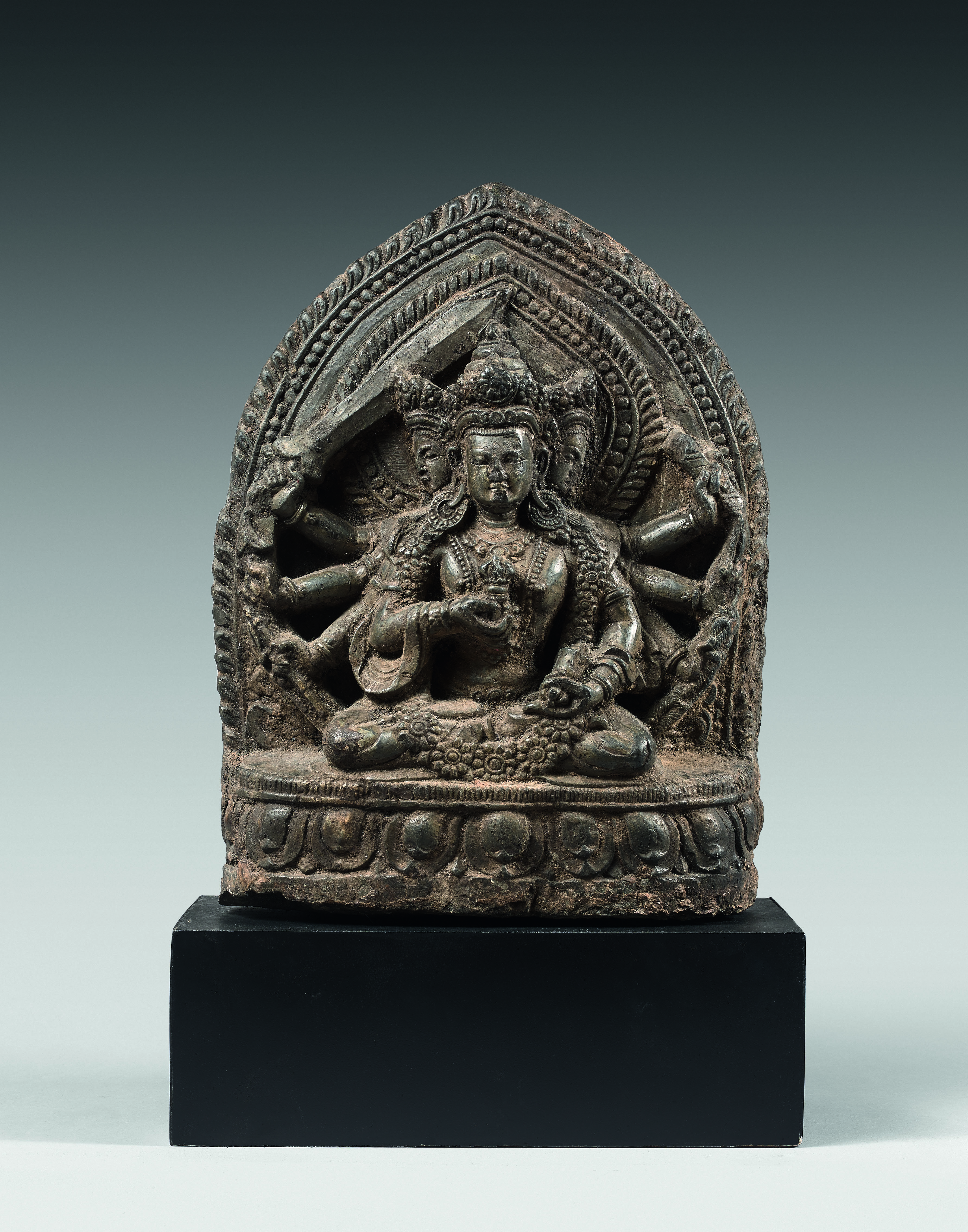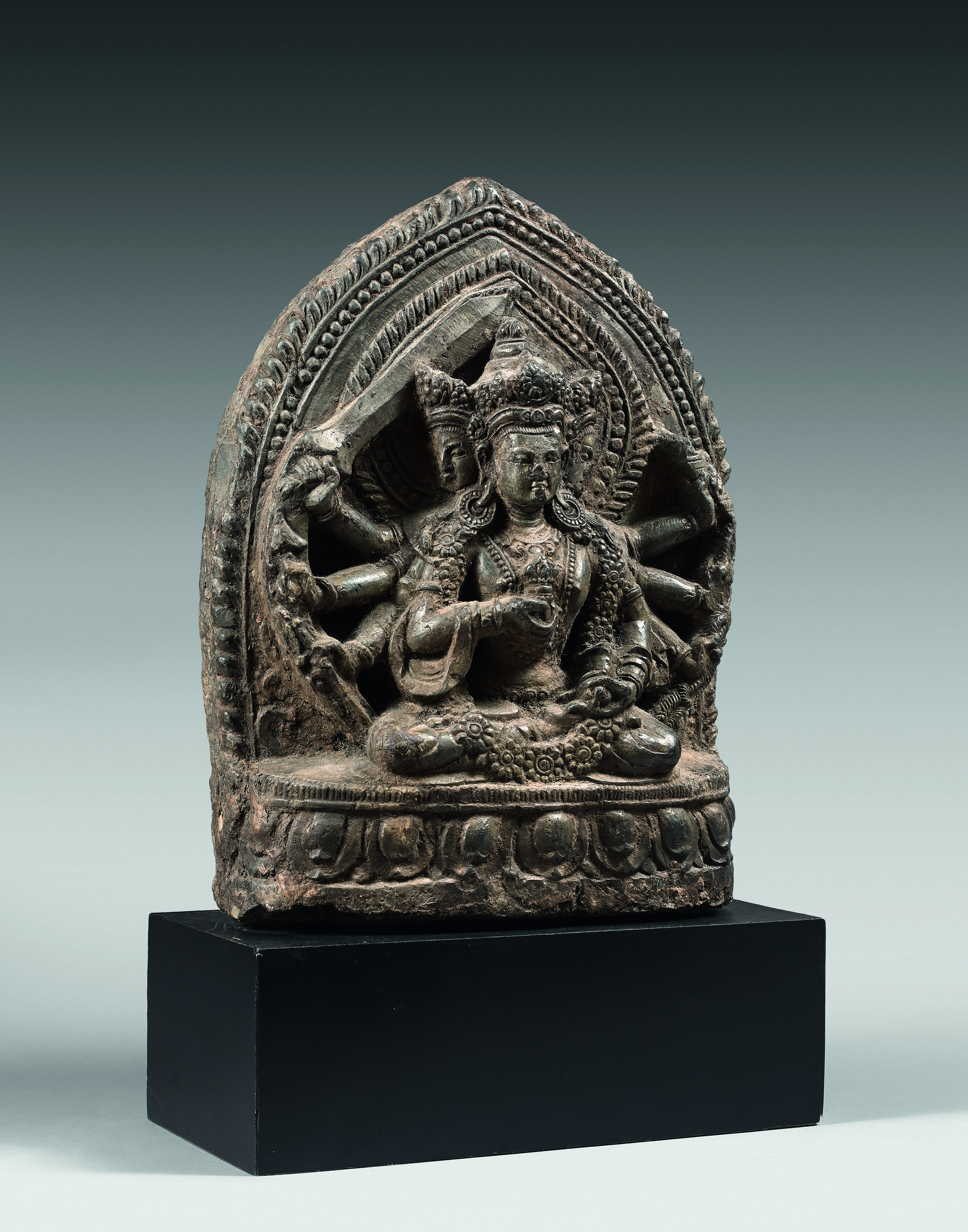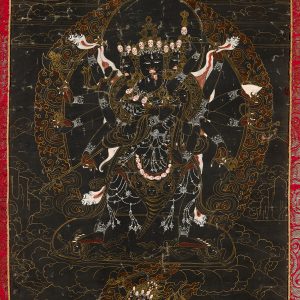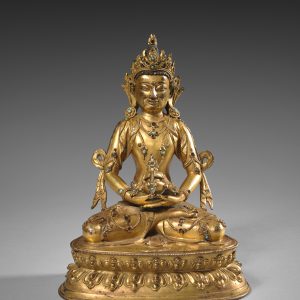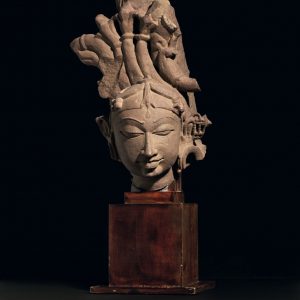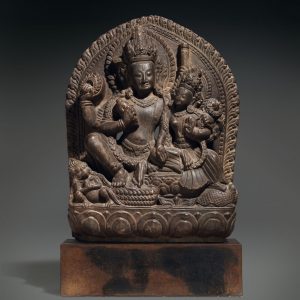Maṅjuśrī in his Dharmadhātu Vāgīsvara aspect
Sandstone
Nepal, Kāthmāndu valley
17th century, early Malla era (1482-1768 / 69)
H. 32 cm
Description
This beautiful stele illustrates perfectly the complexity of local esoteric Buddhism. Depicted here is the Bodhisattva Maṅjuśrī in his aspect Dharmadhātu Vāgīsvara – three faces and eight arms.
Carved in this soft sandstone, the attributes are dynamically arranged. The first right hand raised in front of the chest holds the thunder-diamond (vajra) and the left, holding the bell (ghaṇṭā), rests on the thigh in the manner of the supreme Buddha Vajrasattva. The next two pairs of hands hold the lasso (pāśa) and perhaps an elephant hook (aṅkuśa), then an arrow (bāṇa) and a bow (cāpa). As usual, Maṅjuśrī brandishes the sword (khaḍga) and the book (pustaka) of Prajṅāpāramitā sūtra.
In addition to the rarity of its iconography, it is the delicate modeling of the torso and the solemnity of the attitude that we appreciate. The richness of details is also striking, both in the representation of jewelry as in that of decorative elements. The treatment of the large open flowers of the necklace and the modeling of the petals on the divine seat lotus are characteristic of the time, just as the multiplication of carved rims, here lotus petals and row of pearls. These two motifs are repeated on the rim of the halo. As for the folds of the scarf on the right arm, they suggest a discrete Chinese influence, usual at the time.
Provenance: Private collection, Belgium, since the 1980s.
- Mallmann, Merie-Thérèse, Introduction à l’iconographie du tântrisme bouddhique. Paris : Librairie Adrien-Maisonneuve, 1975 (Bibliothèque de Centre de Recherches sur l’Asie centrale et la Haute Asie, vol. 1).
- Schroeder, Ulrich von, Indo-Tibetan Bronzes. Hong Kong : Visual Dharma Publications Ltd, 1981.

